Rocket Corset from 1961
Corsetry buffs will be interested in this. It doesn't do a thing for your figure, though.
Recognizing that astronauts in orbit would want to move around, Bell Aerospace in 1961 began developing a Zero-G Belt. This device has clusters of tiny rocket nozzles. It's powered by compressed nitrogen stored in a series of curved tubes around the operator's waist.
It was devised by Wendell Moore, the same engineer who cooked up the better-known Bell Rocket Belt.
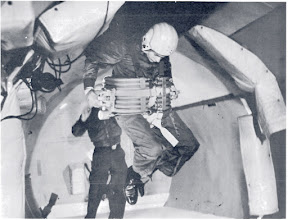
From Rocket Belt
The fine folks at the Contrails project have just scanned in this report (4.4 MB PDF).
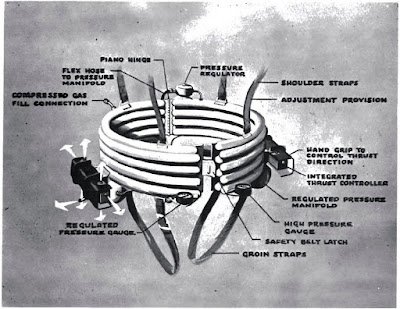
The belt was tested on an air-cushion platform, providing nearly frictionless movement in two dimensions. Looks like fun, doesn't it?
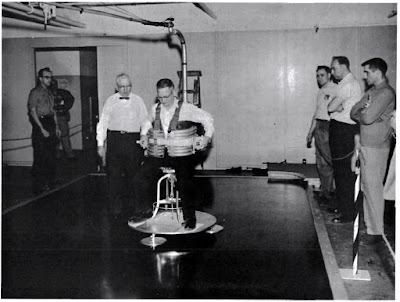
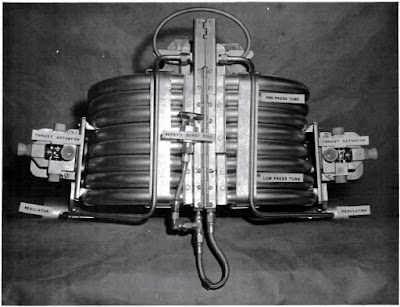
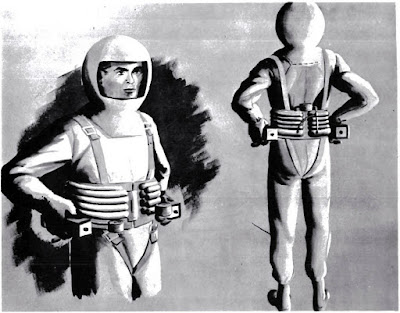
Recognizing that astronauts in orbit would want to move around, Bell Aerospace in 1961 began developing a Zero-G Belt. This device has clusters of tiny rocket nozzles. It's powered by compressed nitrogen stored in a series of curved tubes around the operator's waist.
It was devised by Wendell Moore, the same engineer who cooked up the better-known Bell Rocket Belt.

From Rocket Belt
The fine folks at the Contrails project have just scanned in this report (4.4 MB PDF).

The belt was tested on an air-cushion platform, providing nearly frictionless movement in two dimensions. Looks like fun, doesn't it?


